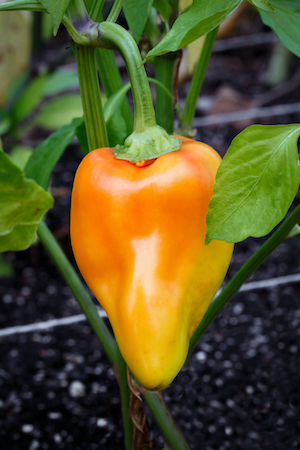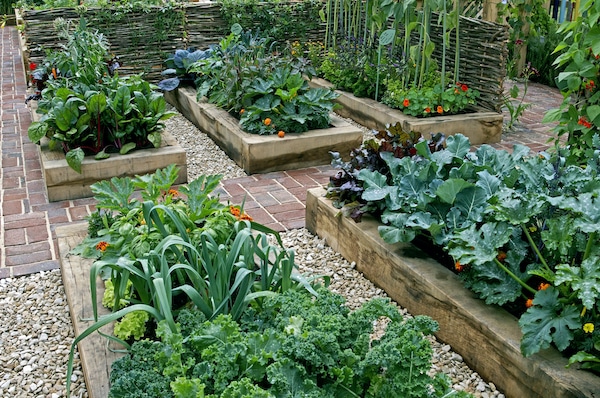As our world faces mounting challenges related to climate change, food insecurity, and a need for more sustainable practices, the modern victory garden movement has emerged as a powerful solution. Victory gardens, originally popularized during World War I and II as a way to supplement rations and support the war effort, have seen a resurgence in recent years as more people seek ways to reduce their carbon footprint, support local food systems, and promote self-sufficiency. In this blog post, we will explore the many benefits of modern victory gardens, from reducing food waste and promoting healthy eating habits to mitigating the impact of climate change and supporting communities in need. Join us as we delve into the fascinating world of modern victory gardens and discover how you can get involved in this sustainable movement.
Today’s victory gardens differ from those of World War II
While the concept of victory gardens remains the same today as it did during World War II – growing one’s own food to supplement rations and support the war effort – there are some key differences between the victory gardens of that era and modern-day victory gardens.
Firstly, modern victory gardens are less focused on supplementing rations and more focused on sustainable, local food sources. While World War II-era victory gardens were often planted in response to food shortages, modern victory gardens are typically grown to reduce one’s carbon footprint and support a healthier lifestyle.
Secondly, modern victory gardens often utilize modern gardening techniques and technologies, such as raised beds, hydroponics, and companion planting, to maximize yields and minimize the use of resources like water and fertilizer.
Finally, modern victory gardens are more community-oriented than their predecessors. Rather than being solely the domain of individual households, modern victory gardens may be established in community spaces, like parks or public gardens, to promote community engagement and shared resources.
Overall, while the concept of victory gardens remains the same, today’s victory gardens are adapted to meet the needs and challenges of our modern world.
Choosing the Veggies for Your Victory Garden
Choosing the right vegetables for your victory garden can make all the difference in the success of your garden. There are many factors to consider when selecting which vegetables to plant, including climate, soil type, and your personal preferences.
One important factor to consider is your climate zone. Certain vegetables thrive in different types of climates, so it’s important to choose vegetables that are well-suited to your region. For example, tomatoes and peppers grow best in warm, sunny climates, while leafy greens like lettuce and spinach prefer cooler temperatures.
Soil type is another important consideration. Vegetables need well-draining soil that is rich in nutrients. If you have heavy clay soil, you may need to amend it with compost or other organic matter to improve drainage and nutrient content.
Obviously, it’s important to choose vegetables that you actually enjoy eating! There’s no sense in planting a vegetable that you don’t like, or that doesn’t fit well into your regular meals. Take some time to think about what vegetables you use most in your cooking, and plan your garden accordingly.
Some great vegetables to consider for a victory garden include tomatoes, peppers, lettuce, spinach, carrots, cucumbers, beans, and squash. By carefully selecting the right vegetables for your climate and soil, and taking your personal preferences into account, you can create a thriving victory garden that produces an abundance of delicious and nutritious vegetables all season long.
Tasting the Past: Rediscovering Delicious Heirloom Vegetables for Your Victory Garden
In recent years, there has been a renewed interest in heirloom vegetables – varieties that have been passed down for generations and are treasured for their unique flavors and history. These vegetables are often grown in small quantities and are not typically found in grocery stores, making them a perfect addition to your modern victory garden.
One of the biggest advantages of growing heirloom vegetables is the variety of flavors available. Unlike modern hybrid vegetables, which are often bred for durability and uniformity, heirloom vegetables are prized for their unique flavors and textures. From sweet and tangy tomatoes to spicy peppers and earthy root vegetables, there is an heirloom variety to suit every taste preference.
Another benefit of growing heirloom vegetables is the opportunity to connect with the past. Many of these vegetables have been passed down through generations of gardeners, and each one has a story to tell. Growing heirloom vegetables allows us to connect with our agricultural heritage and preserve these important varieties for future generations.
While heirloom vegetables may require a bit more care than modern hybrid vegetables, the extra effort is well worth it. These vegetables are often more disease-resistant than their modern counterparts, and they are well-suited to organic growing methods. By including heirloom vegetables in your victory garden, you can experience the satisfaction of growing and eating delicious, nutrient-dense vegetables that have a rich history and unique flavor.
So, how do you get started with growing heirloom vegetables in your victory garden? Start by researching the varieties available at your independent nurseries, like Talini’s Nursery in Sacramento that specialize in heirloom varieties. Consider starting small and experimenting with a few different varieties to see which ones you enjoy the most.
By rediscovering the delicious flavors of heirloom vegetables, we can reconnect with our agricultural heritage and enjoy the taste of the past in our modern victory gardens. So why not give it a try? Your taste buds (and your garden) will thank you!
Plan Your Vegetable Garden Layout
Planning your vegetable garden layout is an important step towards a bountiful harvest. Whether you’re a seasoned gardener or a beginner, there are several factors to consider when deciding how to arrange your garden beds. In this post, we’ll explore some key tips for creating a successful vegetable garden layout.
Lots of Sunlight Is a Must
Vegetables need plenty of sunlight to grow and produce a healthy harvest. When planning your garden layout, choose a location that gets at least six to eight hours of direct sunlight per day. Orient your garden beds north to south to ensure that all plants get adequate light throughout the day. If you have limited space, consider using containers or vertical gardening techniques to maximize sunlight exposure.
Start Plants in Rich Soil
Healthy soil is key to a successful vegetable garden. Before planting, prepare your soil by adding plenty of organic matter, such as compost or aged manure. This will provide the nutrients your plants need to grow strong and healthy. Consider doing a soil test to determine the pH and nutrient levels of your soil, and adjust as necessary to ensure optimal growing conditions.
Intensive Cropping
Intensive cropping is a technique that involves planting vegetables closely together in a concentrated area. This can help maximize space and increase yields, as well as reduce the need for weeding and watering. When planning your garden layout, consider using intensive cropping techniques to make the most of your available space.
Companion Planting Garden
Companion planting is another technique to consider when planning your garden layout. This involves planting complementary plants next to each other in order to improve soil quality, deter pests, and increase yields. For example, planting basil next to tomatoes can improve the flavor of the tomatoes and repel pests. When planning your garden, research companion planting combinations that work well together and incorporate them into your layout.
FAQ – Frequently Asked Questions
Vegetable Garden
Yes, they are still in use today. While the term “victory garden” was popularized during World War I and II, the concept of growing one’s own food has remained relevant and important. In fact, the modern victory garden movement has gained momentum in recent years as more people seek sustainable and local food sources, and as concerns about food security and climate change grow. Many individuals and communities have started gardening, using techniques like raised beds and containers to make it easy and accessible to grow produce even in small spaces. So, victory gardens are not only still in use today, they are thriving!
A modern victory garden is a vegetable garden that is grown by individuals or communities in order to provide a sustainable and local food source. The goal is to reduce carbon emissions from transporting food long distances, support healthier eating habits, and promote self-sufficiency
No, you don’t need a lot of space. In fact, many gardens are grown in small spaces like balconies, patios, or even windowsills. Container gardening and vertical gardening are great options for those with limited space.
While there is a learning curve to gardening, growing vegetables can be quite easy with the right resources and knowledge. There are many resources available online and in books to help beginners get started.
Yes, they can help the environment by reducing the carbon emissions associated with transporting food long distances. They also promote sustainable growing practices, reduce food waste, and encourage a more local food system.
Yes, growing your own vegetables can help you save money on your grocery bill. You can grow your own produce for a fraction of the cost of buying it at the grocery store, especially if you focus on growing vegetables that are expensive to buy.







